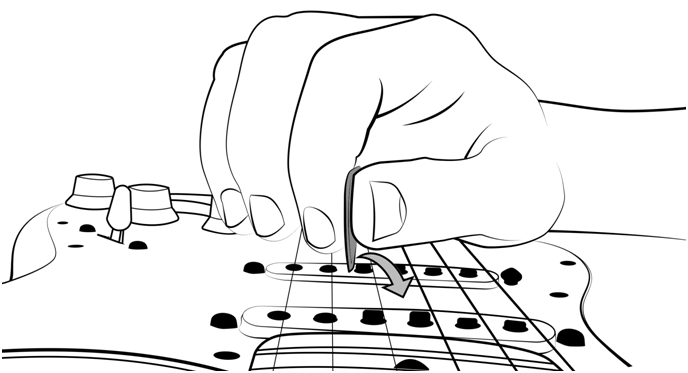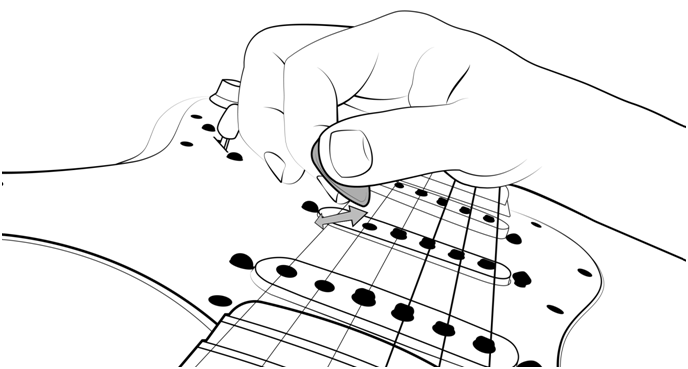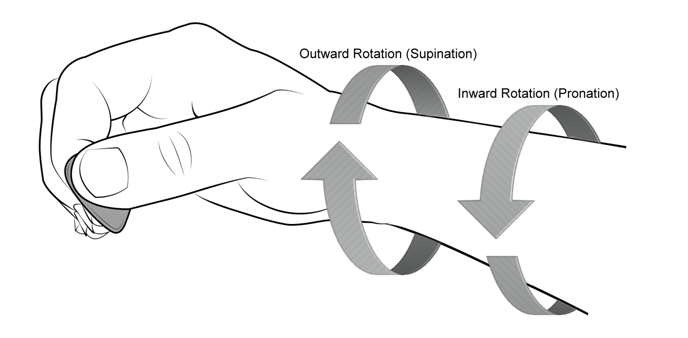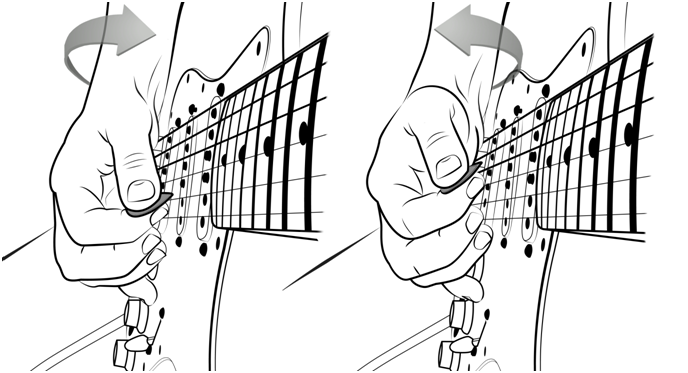Speed Picking: The Power of Forearm Rotation and Downward Picking Orientation
Two of the 9 Principles of Speed picking in the Yngwie Malmsteen style that just about anyone can add to their technical repertoire are rotational motion and picking orientation. When combined, these attributes form a dynamic duo that enable new string changing and picking speed possibilities.
When a pick goes up and down on either side of one string in parallel motion to the guitar body, it remains at a constant distance from the guitar as you push it back and forth through the string. The problem with parallel picking motion is that when changing strings, there’s a good chance the pick will be stranded on the wrong side of the fence, i.e., inaccessible to the string you wish to travel to next. This forces awkward semicircle leaps over strings.
Shredders like Yngwie overcome this problem by replacing parallel motion with downward picking orientation. By slanting the pick along the vertical axis so that the back end of the pick pushes forward, a new picking pathway is created in which down strokes push towards the guitar, and upstrokes pull away from it.
How do you create a pick slant with the picking hand?
The resting pick slant is generated by rotation of the forearm muscles, resulting in the picking hand turning either outward or inward. You can achieve a downward slant by using an outward rotation (supination) of the forearm from the neutral position, and an upward slant by using an inward rotation (pronation) of the forearm from the neutral position. Yngwie does not use an upward pick slant.
Speed Picking Figure 1m:
Forearm rotational picking is also a motion that uses outward and inward rotation to create upstrokes and down strokes. With downward picking orientation, the forearm is already passively supinated in its rested position.It means there is further rotation outward from the starting position on upstrokes, and rotation in ward to the supinated point of origin on down strokes.
Figure 1p illustrates a down stroke having pronated through G string (left) and an upstroke supinating away from the G string (right), ready for the next downstroke. This is different to creating the primary picking motion with wrist or thumb mechanics.
Speed Picking Figure 1p – Pronation (downstroke), Supination (upstroke):
To experiment with supination and pronation in your technique, start on one string with a single note so that you can direct attention to your picking hand. Example 1e provides an example that alternates between quavers and semiquavers. It’s important to keep your technique consistent throughout both.
Speed Picking Example 1e:
If your rotation and downward picking orientation are in place, you should be able to perform the string changes in Example 1f without getting the pick stuck on the wrong side of any of the strings. With the larger distance from the E string to the G string, it’s natural to use a little more supinated rotation to cover the range. Just be sure that you are not switching techniques or using any upward pick slant in this example.
Speed Picking Example 1f:
To see forearm rotation and downward picking orientation in motion, watch this multi-speed video and take note of the absence of parallel picking motion, and the ease of string changing that eventuates.
Try the same lick, making sure that upstrokes pull away from the guitar and downstrokes push in. As you might have noticed from my own picking, the angle in downward picking orientation does not need to be extreme – just enough to avoid parallel picking and getting caught between strings.
To learn more about these precepts and the seven other principles of speed picking, grab a copy of Neoclassical Speed Strategies for Guitar.
“The artists you work with, and the quality of your work speaks for itself.”
Tommy Emmanuel
© Copyright Fundamental Changes Ltd 2025
No.6 The Pound, Ampney Crucis, England, GL7 5SA







